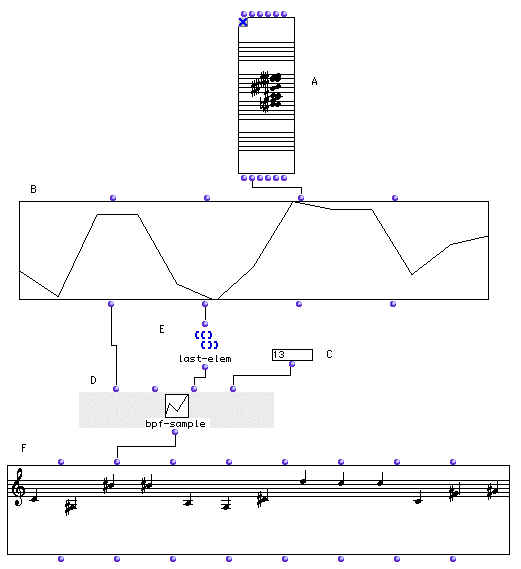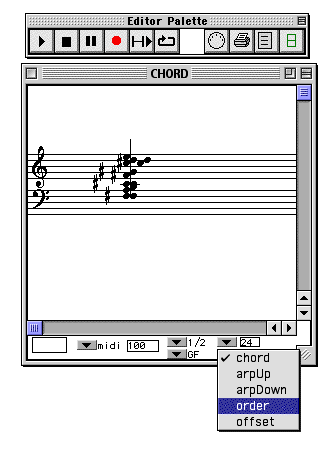OpenMusic Tutorials
Prev| Chapter 7. Breakpoint Functions| Next
Tutorial 20: Using BPFs II: Sampling a sequence
of notes
Topics
Sampling a melodic contour to produce a sequence of notes.
Key Modules Used
Chord, Chord-seq,
BPF, bpf-sample, list-
max
The Concept:
Here we sort of reverse the last tutorial: we take a melody, turn it into a
graphic melodic contour, then use bpf-sample to take that
shape and turn it back into values. When converting it back to values, we can
take more or fewer samples than the original sequence, creating a “smoother”
melody.
The Patch:

Enter a sequence of notes in “order” mode in the Chord and lock it:

The BPF box converts the midicents coming out of the Chord box (A) into a break-point function, a melodic contour.
The bpf-sample takes a number of ‘pictures’ of the height
of the graph between the x-axis values specified at the inputs _xmin_ and
_xmax_ and returns them as a list. In our example, there are 13 elements in
the chord. We tell bpf-sample to sample the
BPF 13 times, so the values we get back will be the
same ones we put in. However, we are sampling the height of the graph. If we
enter a number other than 13, we will take that many samples of the graph, and
they’ll no longer line up with the original elements. This will create a new
melody starting in the same place and having the same shape but with a
different number of elements. Try replacing the 13 with 26.
Prev| Home| Next
—|—|—
Tutorial 19: Using BPFs I; Graphic representation of a series of notes|
Up| Tutorial 21: Using BPFs
III: Scaling a melodic contour